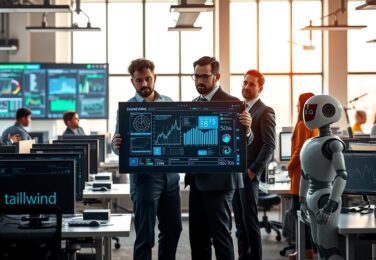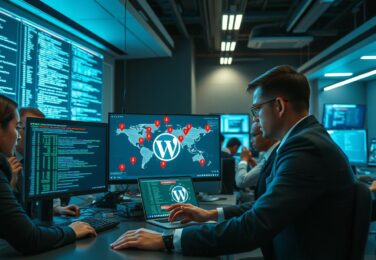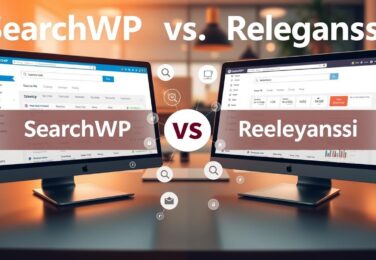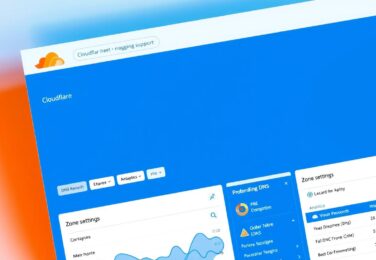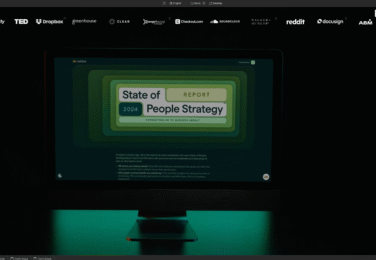Artificial Intelligence and the Future of Work: Opportunities and Challenges
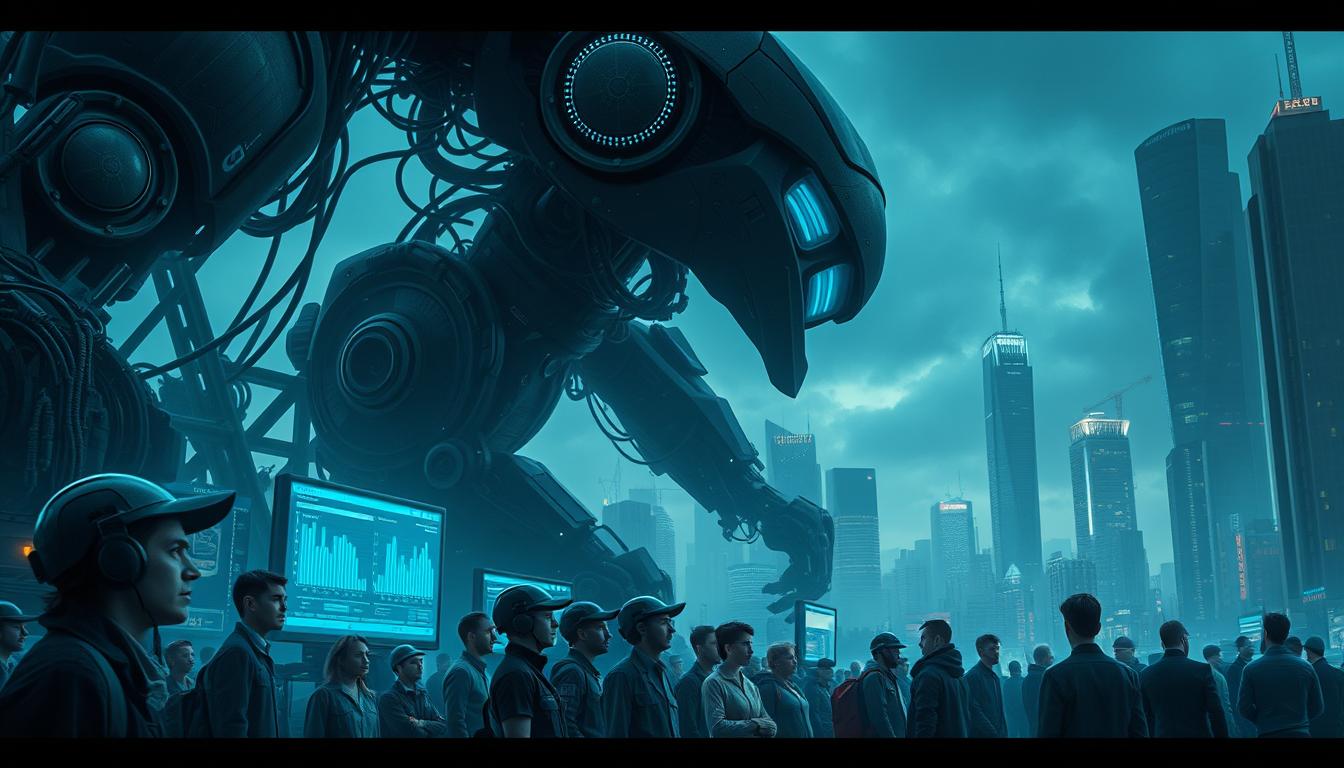
Table of Content
Artificial Intelligence (AI) has made huge strides in the last decade. It’s exciting to think about how it will change the Australian workforce. AI could make industries more efficient and open up new opportunities for innovation.
But, it also brings challenges. It might change how we work and need to learn new skills. This can be scary.
In this article, we’ll look at how AI will affect work in Australia. We’ll talk about the good things AI can do and the problems it might cause. By understanding both sides, we can get ready for the changes AI will bring.
Key Takeaways
- Artificial Intelligence is rapidly transforming the Australian workforce, bringing both exciting opportunities and complex challenges.
- The article explores the need to navigate the pitfalls of AI, such as machine learning limitations, neural network obstacles, and algorithmic biases.
- Reskilling and upskilling Australian workers are crucial to bridging the skills gap and fostering continuous learning in the AI era.
- Ethical considerations in AI development, including data privacy and security, must be addressed to ensure responsible and trustworthy AI technologies.
- Collaborative human-AI workflows and AI-driven innovation can unlock new avenues for growth and entrepreneurship in Australia.
Embracing the AI Revolution
Technology is moving fast, and AI is changing our lives and work in Australia. It’s making tasks easier and changing industries. But, it also brings challenges for workers to adapt smoothly.
The Rapid Pace of Technological Advancements
AI and machine learning have made huge leaps. Neural networks are improving in areas like understanding language and seeing images. These advances are making machines do things humans used to do, pushing the limits of machine learning and neural network abilities.
Redefining Work and Employment Landscapes
AI is taking over more tasks, changing jobs in many fields. This change is forcing businesses and workers in Australia to rethink their roles. It’s crucial to adapt to this new AI-driven work world.
“The future of work is a future with AI, not without it. The key is to embrace and harness its capabilities to augment and empower human potential.”
Understanding AI’s fast growth and its impact on work in Australia helps us prepare for the future. We can face the challenges and seize the opportunities that come with AI.
| Opportunity | Challenge |
|---|---|
| Increased efficiency and productivity through automation of routine tasks | Displacement of traditional job roles and the need for reskilling |
| Freeing up human workers to focus on more strategic, creative, and problem-solving tasks | Addressing machine learning limitations and neural network obstacles to ensure reliable and unbiased AI systems |
| Enhancing decision-making and forecasting capabilities through data-driven insights | Ensuring a smooth transition and adaptation to the changing employment landscape |
AI Challenges
Artificial intelligence (AI) has made huge strides, but it still faces big challenges. These include the limits of machine learning and the hurdles of neural networks. AI experts and researchers are working hard to overcome these obstacles to unlock AI’s full potential.
Machine Learning Limitations
Machine learning is a key part of AI. However, it can be limited by the quality and amount of data used to train it. Biased data can lead to biased results, and not enough diverse data can make it hard to generalise. Also, machine learning struggles with complex tasks that need deep understanding.
Neural Network Obstacles
Neural networks, the heart of deep learning, have their own challenges. They can be attacked in ways that make them make wrong predictions. The “black box” problem also makes it hard to understand why they make certain decisions.
As we explore AI further, we must tackle these challenges. It won’t be easy, but the benefits of a better AI system are worth it.
| Challenge | Description |
|---|---|
| Machine Learning Limitations | – Biased training data leading to biased outputs – Inability to generalise and handle real-world complexities – Struggles with tasks requiring complex reasoning or contextual understanding |
| Neural Network Obstacles | – Vulnerability to adversarial attacks – Opacity and difficulty in explaining decision-making (the “black box” problem) – Challenges in high-stakes applications that require transparency and accountability |
The Double-Edged Sword of Automation
The use of artificial intelligence (AI) and automation in Australia’s workforce is complex. It can make businesses more efficient and save costs. But, it also means jobs might be lost, making some people poorer.
Dealing with AI’s challenges is key. Issues like algorithm biases and data problems can affect how well automation works. This might make things worse for some groups in society.
To make the most of automation, we need to work together. Policymakers, employers, and workers must join forces. We should create strong rules, train people, and encourage learning. This way, AI and automation can help everyone in Australia.
| Potential Benefits | Potential Challenges |
|---|---|
|
|
By tackling these issues, we can make sure automation benefits everyone in Australia. We must make sure its effects are fair and well-managed.
“The integration of AI and automation into the workforce is a double-edged sword – it has the potential to drive significant advancements, but also raises valid concerns that must be carefully navigated.”
Reskilling and Upskilling for the AI Era
The Australian workforce is changing fast with the AI revolution. It’s now key to reskill and upskill. Schools, employers, and government must work together. They need to make sure workers have the skills to succeed in an AI world.
Bridging the Skills Gap
AI and automation have changed the job market a lot. Some skills are no longer needed, while new ones are in demand. We need to invest in programs that help workers learn new skills. This will help them keep up and make Australian businesses competitive globally.
Fostering Continuous Learning
With data and AI challenges, continuous learning is vital. It helps Australian workers stay ahead and adapt to new job market changes. By always learning, workers can improve their skills, stay relevant, and find new opportunities in the AI world.
| Reskilling Initiatives | Upskilling Opportunities |
|---|---|
|
|
By investing in reskilling and upskilling, we can empower Australian workers to thrive in the AI-driven future and unlock new avenues for career growth and innovation.
“The future of work is not about human vs. machine, but about human and machine working together to create a better world.”
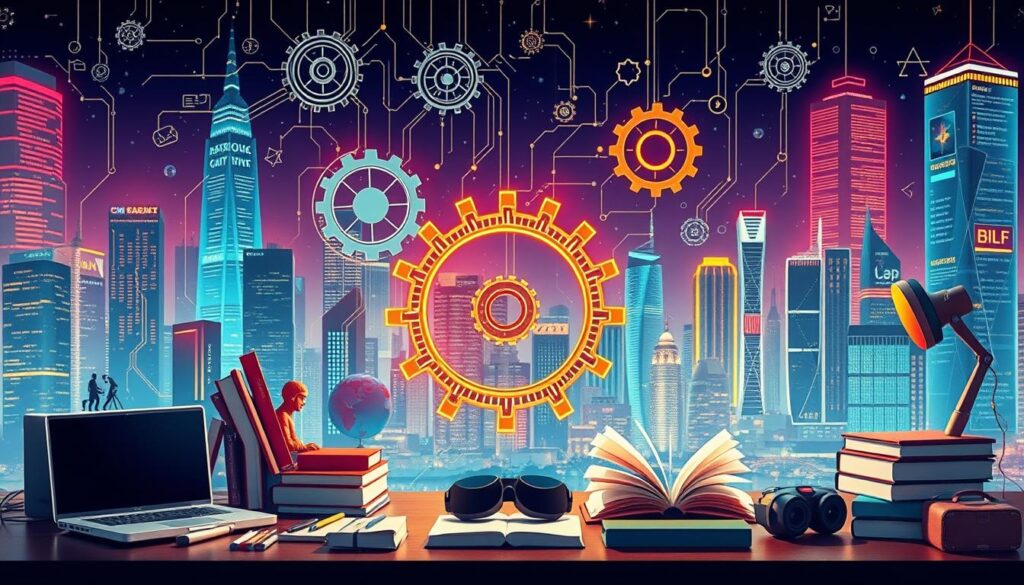
Ethical Considerations in AI Development
Artificial intelligence (AI) is becoming a big part of our lives and work in Australia. We need to think about the ethics of making and using AI. It’s important to tackle biases in AI to avoid unfair treatment. Also, keeping AI data safe and private is key to gaining public trust.
Addressing Algorithmic Biases
AI can show biases from its creators, leading to unfair decisions. We must watch out for these biases to ensure fairness for everyone in Australia. Checking AI for biases and having diverse teams work on it are important steps.
Ensuring Data Privacy and Security
The data for AI often has personal info, and we must protect it. We need strong privacy and security to handle data scarcity issues and AI safety concerns. Being open about how data is used helps build trust in ethical AI dilemmas.
“The development of full artificial intelligence could spell the end of the human race. It would take off on its own, and re-design itself at an ever-increasing rate. Humans, who are limited by slow biological evolution, couldn’t compete and would be superseded.”
We must be careful with AI’s algorithm biases and data privacy. By being responsible in AI development, we can use its power for good. This way, AI can benefit everyone in Australia.
Collaborative Human-AI Workflows
Artificial intelligence (AI) is changing the Australian workforce fast. Instead of seeing AI as a replacement, we can use it to make human work better. This way, we get more done, think creatively, and solve problems better.
This team-up approach helps us get past AI’s limits. It tackles ai challenges, machine learning limitations, and neural network obstacles. Australian workers can now excel in a world where humans and AI work together.
Augmenting Human Intelligence
The secret to working well with AI is knowing what each can do best. AI is great at handling data, finding patterns, and making quick decisions. Humans, on the other hand, are creative, understand context, and have emotional smarts.
When we work together, we can solve problems better and come up with new ideas. This teamwork makes us more efficient and innovative.
“The future of work is not about humans versus machines, but about humans and machines working together to achieve greater heights.”
By letting AI handle the routine tasks, humans can focus on the big picture. This way, we make better decisions and grow in our careers. AI helps us work smarter, not harder.
| Strengths of Humans | Strengths of AI |
|---|---|
| Creativity and innovation | Data processing and pattern recognition |
| Contextual understanding | Rapid decision-making |
| Emotional intelligence | Scalability and efficiency |
By working together, Australian businesses and workers can overcome the challenges of new technology. This partnership opens up new chances for growth and success.
AI-Driven Innovation and Entrepreneurship
In Australia, artificial intelligence (AI) is changing our economy. It’s opening up new chances for innovation and starting businesses. AI is helping create new solutions in many fields, like healthcare and finance.
Australian entrepreneurs can lead the AI revolution. They just need to understand AI’s challenges and use its power wisely.
One big AI challenge is the limitations of machine learning. These algorithms work well in some areas but can fail outside their training data. They might also show biases and neural network obstacles.
But, the potential for AI is huge. AI can automate simple tasks, letting humans do more creative work. This change offers a great chance for entrepreneurs to create new products and services.
“The future of work is not about humans versus machines, but about humans and machines working together to create new possibilities.”
Australian entrepreneurs can make a big impact with AI. They can create solutions that grow the economy and improve lives. This will make Australia a key player in the AI world.
The Role of Policymakers and Governments
In Australia, AI is becoming more common. Policymakers and governments have a big role in its future. They need to create strong rules and guidelines for AI. This ensures AI is used in a fair, open, and accountable way.
One important task for policymakers is to deal with algorithm biases. These biases can make things unfair. Governments must find ways to make AI fair and include everyone.
Regulatory Frameworks for Responsible AI
Policymakers also need to solve data scarcity issues and computational constraints. They should make rules for how data is collected and used. This protects privacy and lets AI be explored responsibly.
Also, governments must handle ethical AI dilemmas and AI safety concerns. This builds trust in AI. They should make clear rules for using AI in important areas like healthcare and transport.
“Responsible AI development is not just a technological challenge, but a societal one that requires close collaboration between policymakers, industry, and the public.”
Australian policymakers can make AI work for everyone. By being proactive in AI governance, they can make sure AI benefits society. This is key for a future where AI and humans work well together.
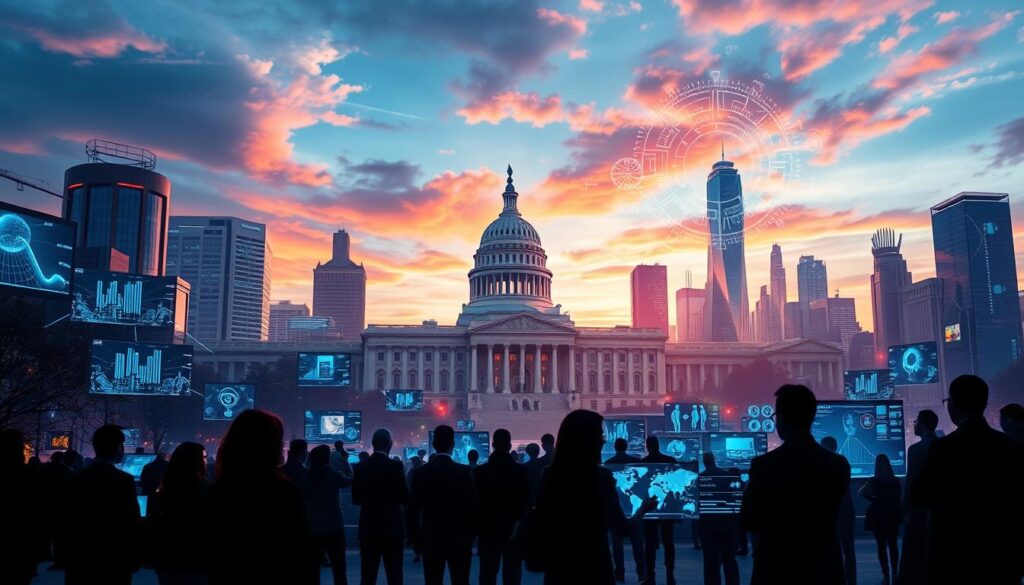
Conclusion
Artificial Intelligence is changing the world, and we’re just starting to see its impact. We face many challenges, like the limits of machine learning and the hurdles of neural networks. But, by working together, we can make sure Australian workers and industries grow with technology.
We need to tackle the downsides of AI, like biases and data problems. We also have to deal with the limits of computers. But, by doing this, we can make AI work for everyone. This way, we can create a future where AI helps us succeed.
The road ahead will have its ups and downs. But, if we focus on making AI safe and responsible, we can use it to boost innovation and business in Australia. Let’s work together to make AI a force for good, combining human smarts with machine power to move our country forward.

